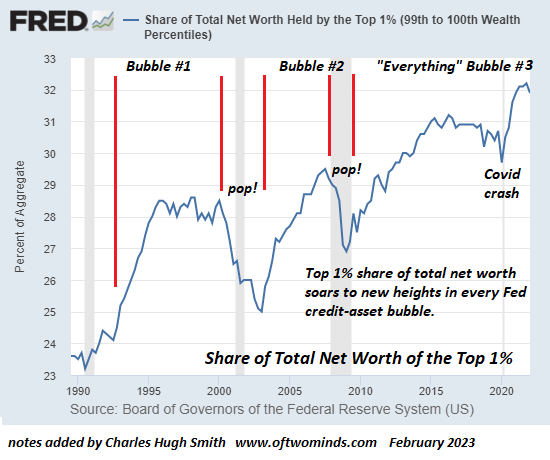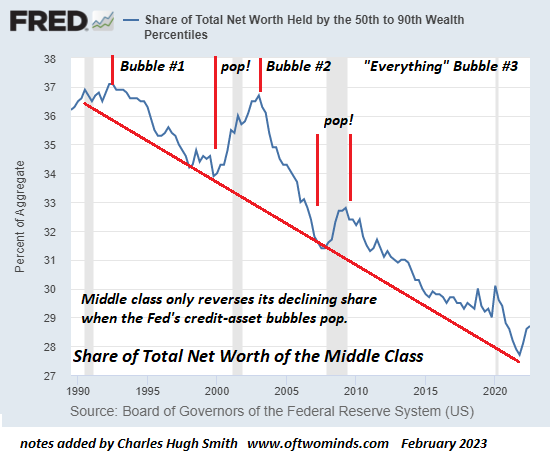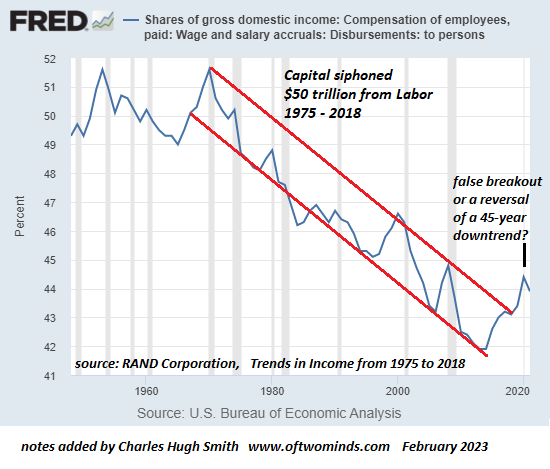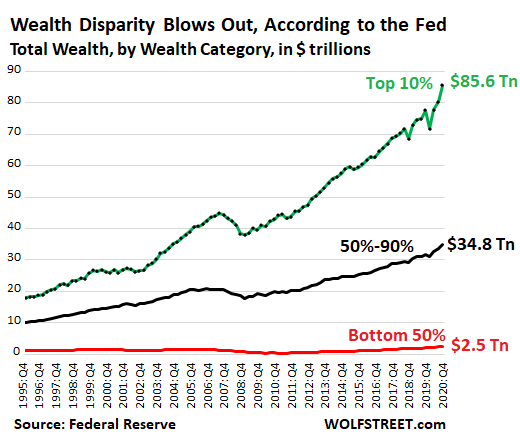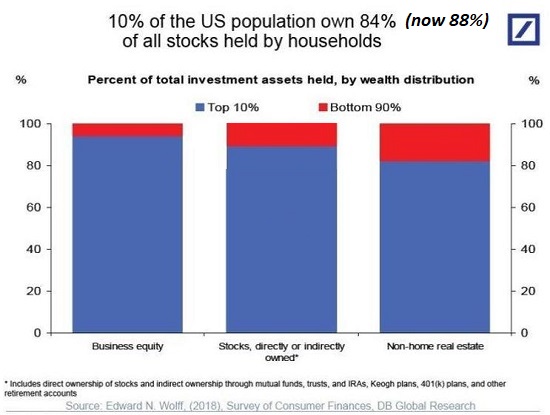The net result of hyper-globalization and hyper-financialization is the crumbling of the middle class.
Neofeudal societies and economies lack a vibrant middle class. This is the defining feature of feudalism and its updated V2.0, neofeudalism: a nobility (based on birth or finance, it doesn’t matter) controls the vast majority of wealth, political power and productive capital, all served by a powerless peasantry.
The modern versions of capitalism emerged when a European middle class arose and became powerful enough economically and politically to dismantle feudalism. The fundamentals of the middle class are:
1. A mindset / set of values embracing (as highlighted by writer Peter Frost) “thrift, prudence, negotiation, and hard work.”
2. Access to markets and credit so enterprises could be established and expanded.
3. Sufficient education to navigate regulations and the requirements of enterprise.
4. The free flow of labor, capital, goods and services.
Feudal economies lacked these fundamentals by design. All these forces were restricted to enforce the power and perquisites of the Nobility.
Neofeudalism is a trickier beast. Neofeudal economies and societies make a big PR show of being open to new enterprise, but the real-world reality is not so warm and fuzzy: new cartels and monopolies arise in a fierce struggle to stamp out competition and influence regulators to not just enable predatory cartels/monopolies but defend them.
The past 30 years can be characterized by the ascent of capital and the decline of labor. As the chart below shows, wages’ share of the economy has been in a 45-year decline. The recent uptick may be a false breakout or it might be a change in trend. It’s too early to tell. But in any event, wages–the bedrock not just of the working class but of the middle class–have been chipped away to the tune of $50 trillion siphoned away by capital. (Source: Trends in Income From 1975 to 2018 RAND Corporation)
Another mechanism is visible in the charts below showing the Share of Total Net Worth of the top 1% and the middle class, i.e. the households between 50% and 90% (this broad definition includes the spectrum fron lower middle class, households with incomes around the median, and upper-middle class households earning considerably more).
As the chart below shows, the top 10% own the vast majority of income-producing assets:, stocks bonds, income real estate and enterprises. The relative share owned by the middle class is at best modest, at worst negligible.
The key economic dynamic of the past 30 years is central bank-driven credit-asset bubbles which propel the assets owned by the top 10% to the moon. Those who own few such assets do not benefit from these asset bubbles, so their share of net worth (wealth) declines accordingly.
The two primary forces in the past 30 years are financialization and globalization, forces which accelerated under central bank / Neoliberal trade policies into hyper-financialization and hyper-globalization: hyper-financialization constantly inflates ever-larger asset bubbles, enriching the already-rich, while hyper-globalization forces labor to compete with lower-cost workforces globally, effectively transferring wages to capital, which can optimize labor / regulatory /credit / currency arbitrage to maximize corporate profits at the expense of the bottom 90% who depend on wages for their income rather than capital.
The most striking feature of the fortunes of the top 1% and the middle class is clearly visible: the share of total wealth of the top 1% soars to new heights in every bubble, while the share of the middle class dives.
The share of the middle class only rises when asset bubbles pop. This is the result of the top tier of US households owning the vast majority of assets: as bubbles pop, those who own few assets suffer far less than those who own most of the assets that bubble higher on the back of central bank stimulus and easy credit.
When the bubbles inevitably pop, the share of the top 1% crashes as the share of the middle class makes a temporary gain.
Please take a look. It’s rather remarkable, isn’t it?
